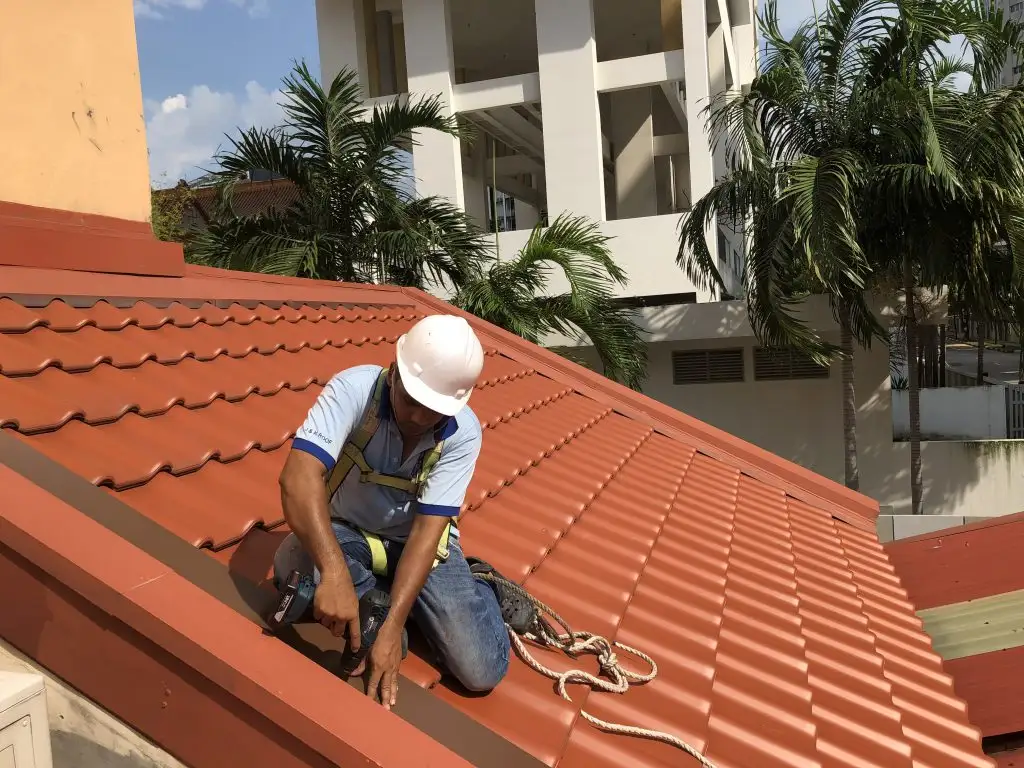What’s Involved In Maintaining A Palm Tree?

If you are thinking of giving your home a more tropical look then few plants are better at achieving that than palm trees. There’s nothing like having palm fronds waving in the wind to give you the feel of a tropical oasis. As with any plant you are not familiar with you are probably going to have some reservations about the amount of maintenance required to keep them alive and healthy though. Here are a few answers to some of the common questions you may have about palm trees.
Table of Contents
What Is Palm Tree Maintenance?
Palm trees come in a variety of different types and each type has its own set of needs and preferences. Most are from topical climates and prefer sun and heat as a result. They also like moist soil.
If you are in any doubt about the specific needs of your species of palm tree then you’ll need to research that species and find out what their requirements are. Check the label that came with the plant for the species name and do some internet searches to find out more about that species. The label will probably include some information about the plant’s care and maintenance, but you’ll want to know as much as you can to ensure that you don’t kill the plant through ignorance. If the palm didn’t come with a label then do some image searches for young palm trees until you find one that matches the characteristics of your palm and lists the species. In most cases there’ll be at least enough information provided to drill down a bit further in your search. Note that immature plants may look different than their grown-up counterparts, so keep this in mind.
Are They High Maintenance?
Palm trees are generally pretty hardy and fairly low maintenance. They normally require a lot of water to grow, but are also fairly tolerant of drought conditions. You may need to occasionally trim off dead and unwanted leaves.
When To Trim And How Often?

Generally you only need to trim off the old dead leaves that have turned brown. You’ll probably need to do this once or twice a year. If the bottom-most leaves are getting in the way then you can trim them off but don’t remove too many or the plant may not stay healthy. It’s not necessary to regularly remove healthy leaves the way it is with some other types of tree. If you live in an area that is prone to storm damage then you may want to pay more attention to trimming off dead leaves as the dry leaves may blow loose in heavy winds and potentially go through a window.
How Much Will It Cost?
The cost of getting your palm tree trimmed will depend on the size of the tree, palm maturity, and the region you live in. For a tree under thirty feet you are probably looking in the range of $75 to $400 depending on the amount of work involved. For a taller tree expect to pay from $100 up to around $1200. Trees that have been regularly maintained will cost less than trees that have been let go and need a lot more work to bring them under control as a result.
Should I Fertilize Mine?

Like any plant palm trees require food and potted palms will also use up some of the nutrients in their soil over time. During their growing season from late winter through to early fall they should be fertilized with a slow-release organic fertilizer. Avoid synthetic chemical fertilizers as these can do more harm than good. If the tips of the leaf fronds start to turn brown then this can be a sign of over-fertilizing, so keep an eye out for brown leaf tips after applying fertilizer.
While palm trees are fairly low maintenance they do require some occasional work to trim leaves and keep the water up to them. They are fairly hardy trees though and will give you less trouble than many other species. So if you want to add a tropical theme to your garden or house then palm trees are a great choice that you are unlikely to regret.
What About Watering?
Most varieties of palm trees like moist soil so you’ll probably need to water several times a week. Avoid water-logging the soil though as this can result in fungal disease and can drown the roots. You should also let the soil dry out a little between watering. The plant should be deep-watered, which means that you give it water over an extended time period giving the water time to sink into the soil. You’ll also want to adjust the amount of water you provide depending on the time of year. Palms will obviously need less water in the middle of winter and more on hot summer days. Keep an eye on the amount of water the plant soaks up to see what its needs are.

How Often?
For outdoor palms you’ll want to water every day for the first week after planting. For the second week water the plant every second day. From the third week onward water two to three times a week. Adjust the amount of water you give the plant depending on other watering events, such as rainfall or run-off from your lawn sprinkler. Once a tree gets to a large size it may get enough moisture from ground water to keep it alive, depending on the area it is planted.
For container palms placed outside or indoors you generally want to water two to three times a week and give the plant roughly the same volume of water as the container it is in, assuming the container is the right size for the plant. If your palm is in a fifteen gallon container then give it around fifteen gallons of water for each watering, spread out over enough time to let the water soak the soil evenly. This is just a rough guide though, so monitor the plant and soil to see how it responds to the watering. You can buy soil probes which you push into the soil to get a sample of the deeper soil, so consider getting one of these to give yourself some perspective on how well the water is saturating the soil.
When?
During summer you’ll generally want to water in the early morning or late afternoon. You should avoid watering in the middle of the day as the water will be more likely to evaporate and may stress the plant. In winter water in the morning.
How Long Does A Palm Tree Live?
The lifespan of a palm tree will vary depending on the species but most will live in the range of about seventy to one hundred years. Some varieties have shorter lifespans, such as the Areca palm which lives for only 40 years. Palm longevity will also vary depending on how well they are looked after.





